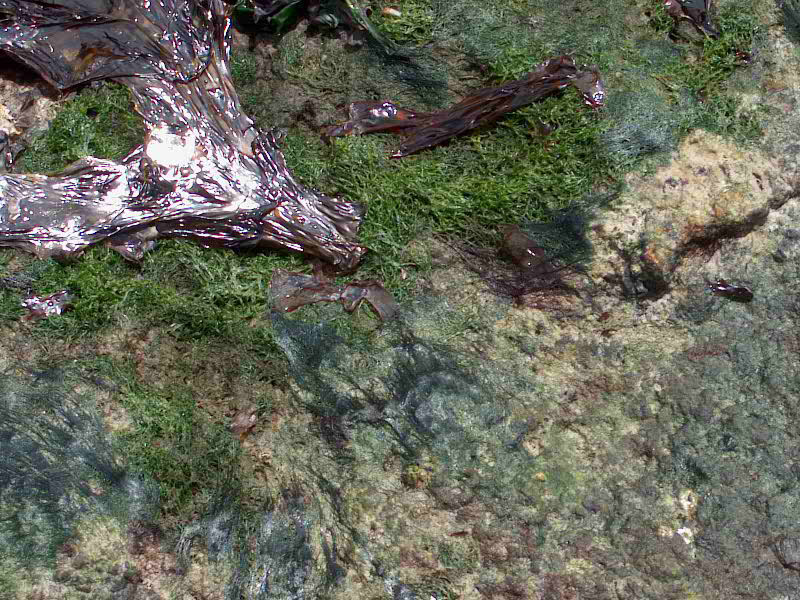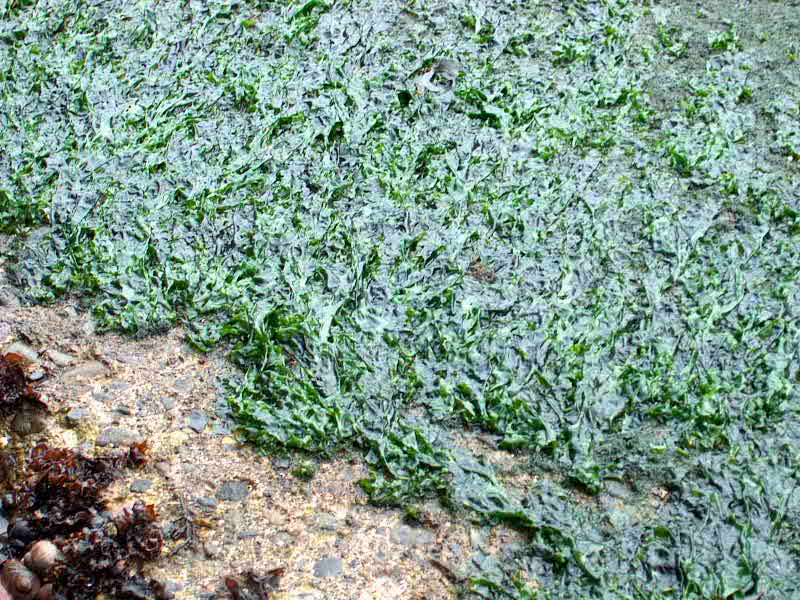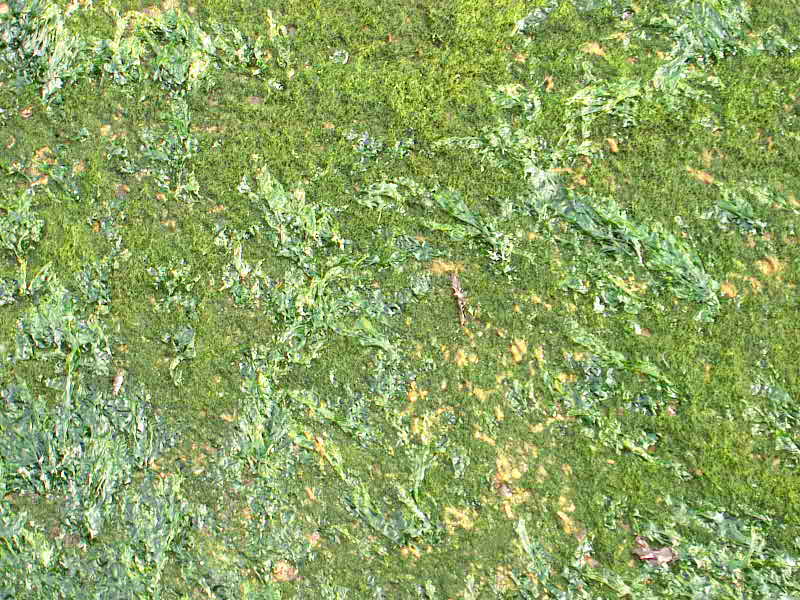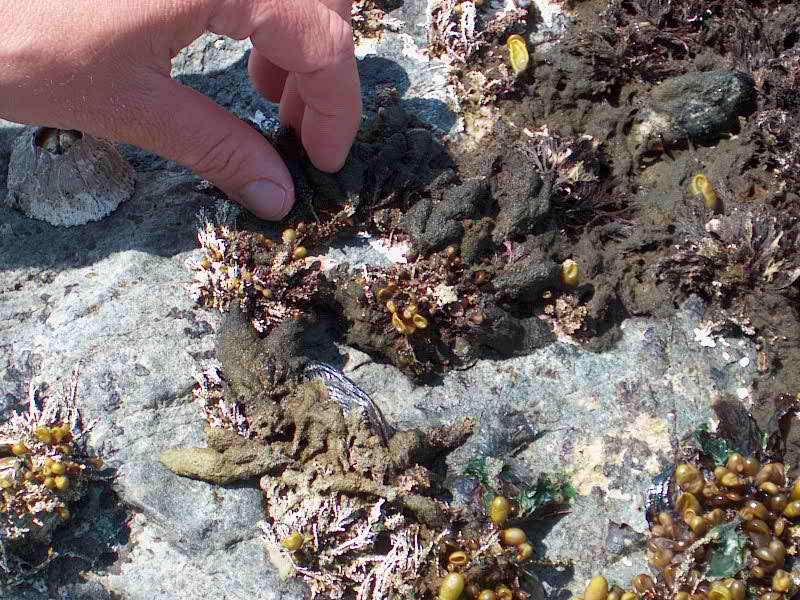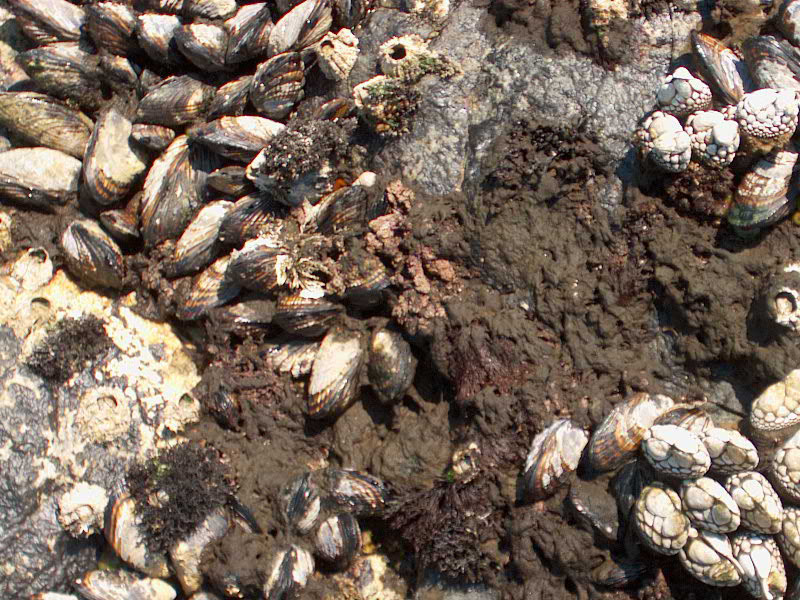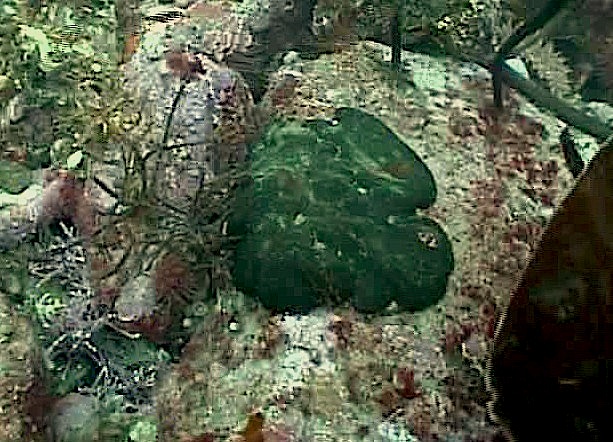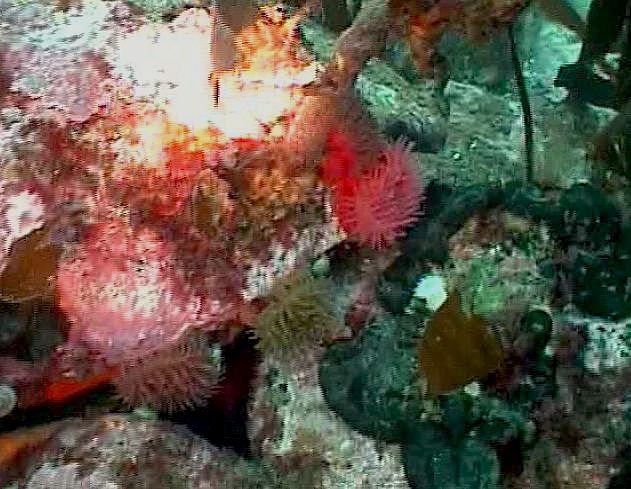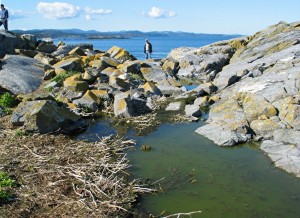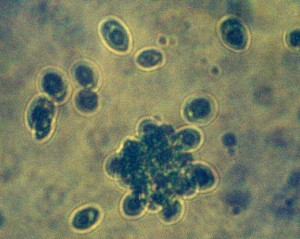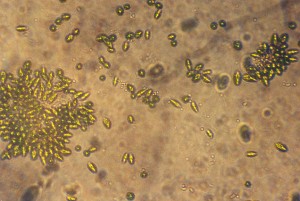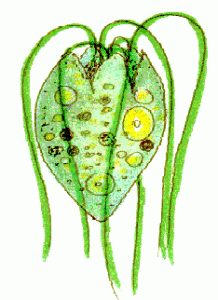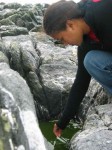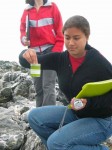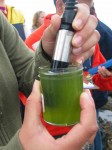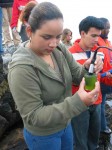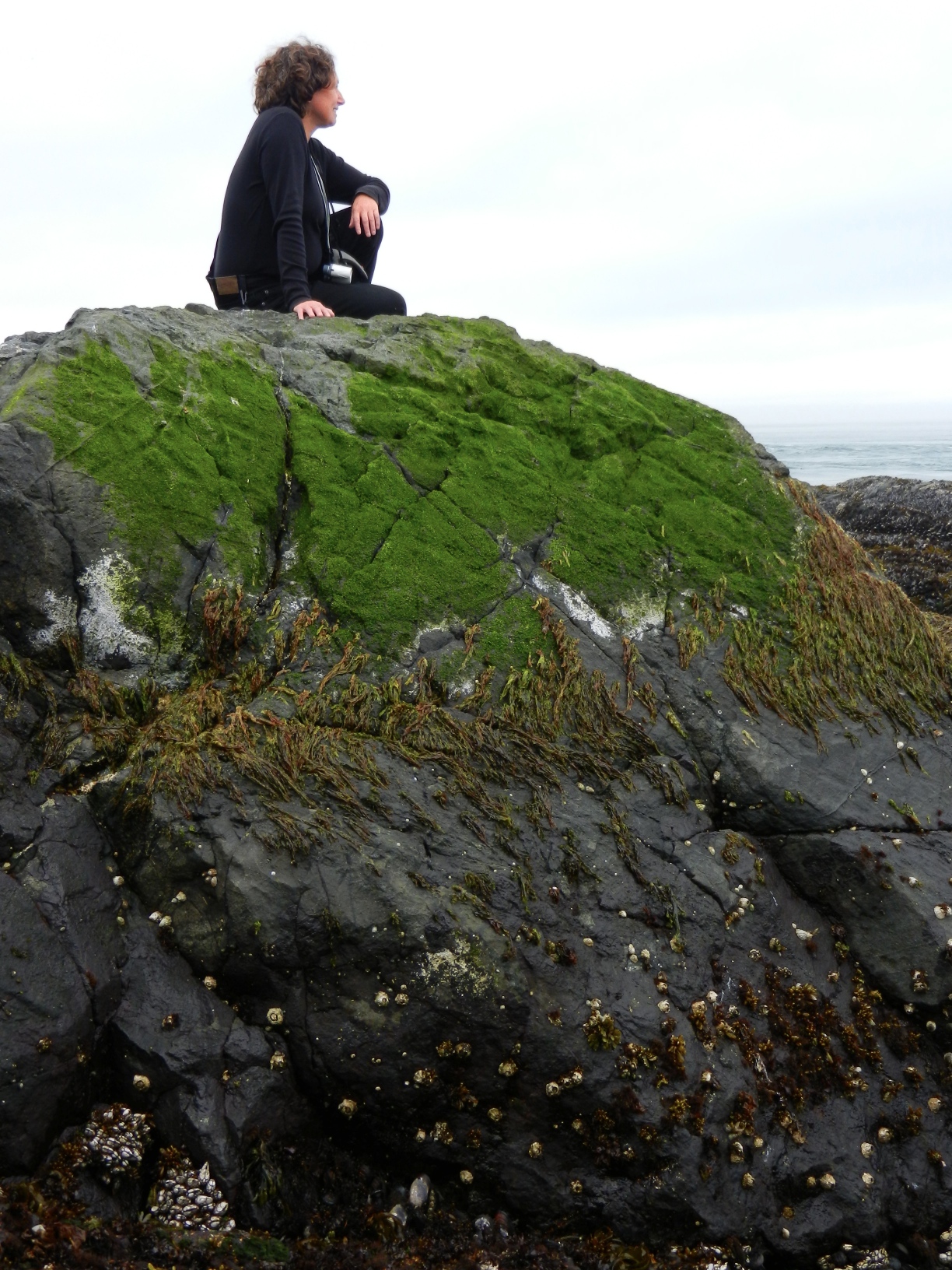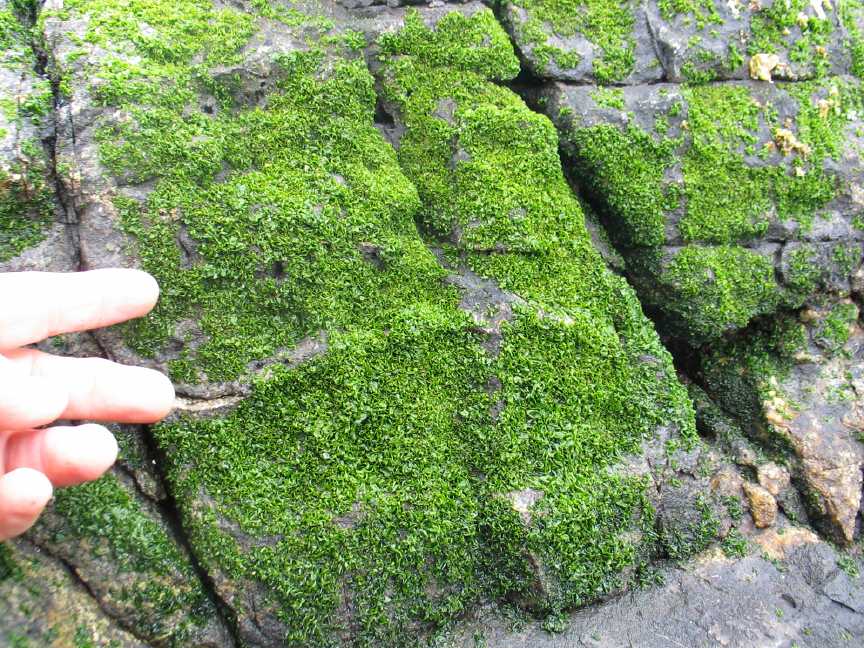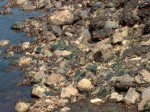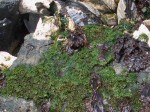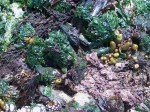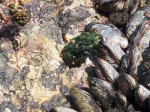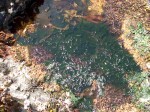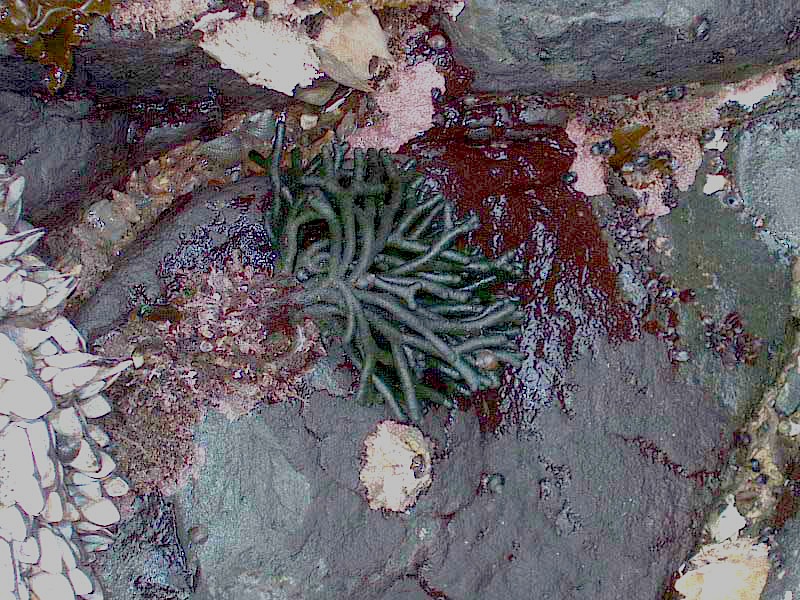
Codium fragile and several red algae species in the background– photo Ryan Murphy
Habitats of Codium fragile:
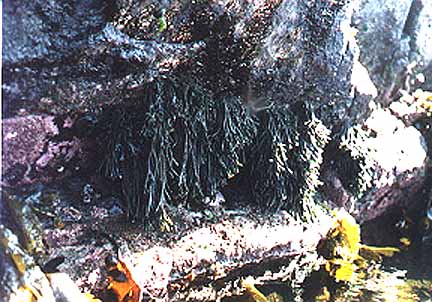
Codium fragile hanging from the rock on the south side of the south penninsula. –2002 photo G.Fletcher
Codium fragile is native to the Pacific Ocean. The species inhabits the middle and lower intertidal zone as well as subtidal regions of rocky shores.t is also found in large tide pools permanently filled with water. Therefore it is found at Race Rocks. At Race Rocks in 2001, the species occurred in only two small areas, although it was found when diving in earlier years in larger beds, shallow subtidally on the south side of Bentinck Island just across Race Passage north from Race Rocks. On the north side of the Great Race, there was one plant in a tide pool, and on the South East side, several dozen plants have occurred since the early 1980’s along the zero tide level of the small peninsula island. In 2004 it has been observed in several tidepools however its population still remains limited.
Structure of Codium fragile:
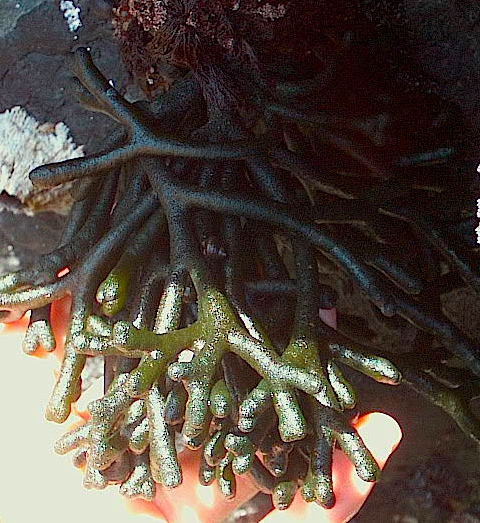
Codium fragile on underside of rock– photo by Ryan Murphy
Codium fragile is a dark green alga, ranging from ten to 40 cm high and consists of repeatedly branching cylindrical segments about 0.5 to 1.0 cm in diameter, and the branches can be as thick as pencil. The segments look like dark green fingers. Its holdfast is a broad, sponge like cushion of tissue. The tips of segments are blunt and the surface is soft, so it is sometimes mistaken as a sponge. Its body consists of interwoven, filamentous cells with incomplete crosswalls forming the inner part of the branches.
Invasive species note: There is another subspecies, Tomentosoides (van Goor) Silva, which is harmful in shellfish beds in the Atlantic. It grows to a much longer length.
Links and References:
1. Common Seaweeds of the Pacific Coast, J. Robert Waaland, Pacific Search Press.
2. Seashore Life of the Northern Pacific Coast, Eugene N. Kozloff, 1973/1983 University of Washington Press.
Classification:
Domain: Eukarya
Kingdom: Protoctista
Phylum: Chlorophyta (Green Algae)
Class: Chlorophyceae
Order: Codiales
Family: Codiaceae
Genus: Codium
Species: fragile (Suringar) Heriot
COMMON NAME: Green sea fingers
 The Race Rocks taxonomy is a collaborative venture originally started with the Biology and Environmental Systems students of Lester Pearson College UWC. It now also has contributions added by Faculty, Staff, Volunteers and Observers on the remote control webcams. The Race Rocks taxonomy is a collaborative venture originally started with the Biology and Environmental Systems students of Lester Pearson College UWC. It now also has contributions added by Faculty, Staff, Volunteers and Observers on the remote control webcams.
Dec 2001–Philip Kam PC-yr.27 |
 The Race Rocks taxonomy is a collaborative venture originally started with the Biology and Environmental Systems students of Lester Pearson College UWC. It now also has contributions added by Faculty, Staff, Volunteers and Observers on the remote control webcams. Dec 2005–Ryan Murphy
The Race Rocks taxonomy is a collaborative venture originally started with the Biology and Environmental Systems students of Lester Pearson College UWC. It now also has contributions added by Faculty, Staff, Volunteers and Observers on the remote control webcams. Dec 2005–Ryan Murphy 
